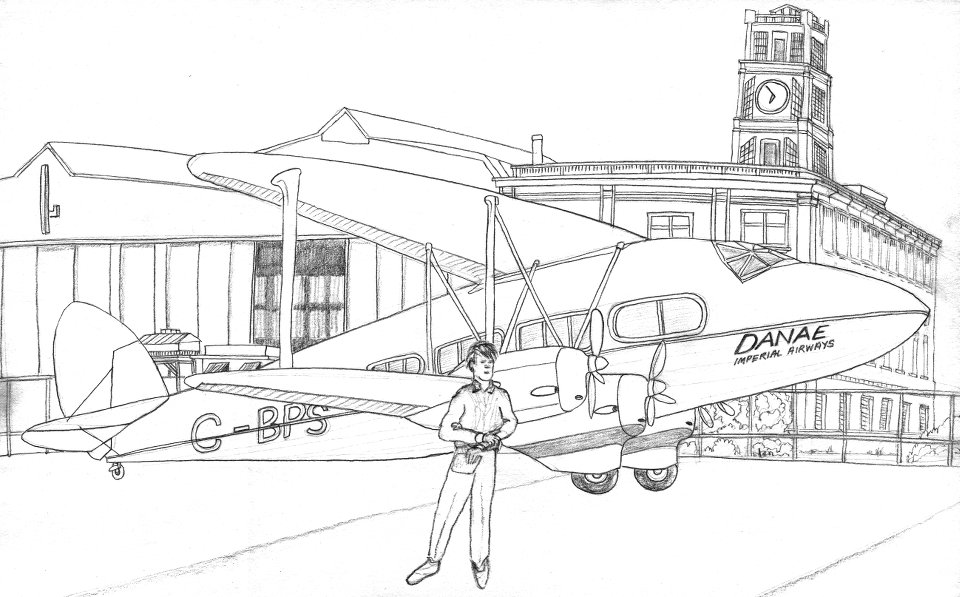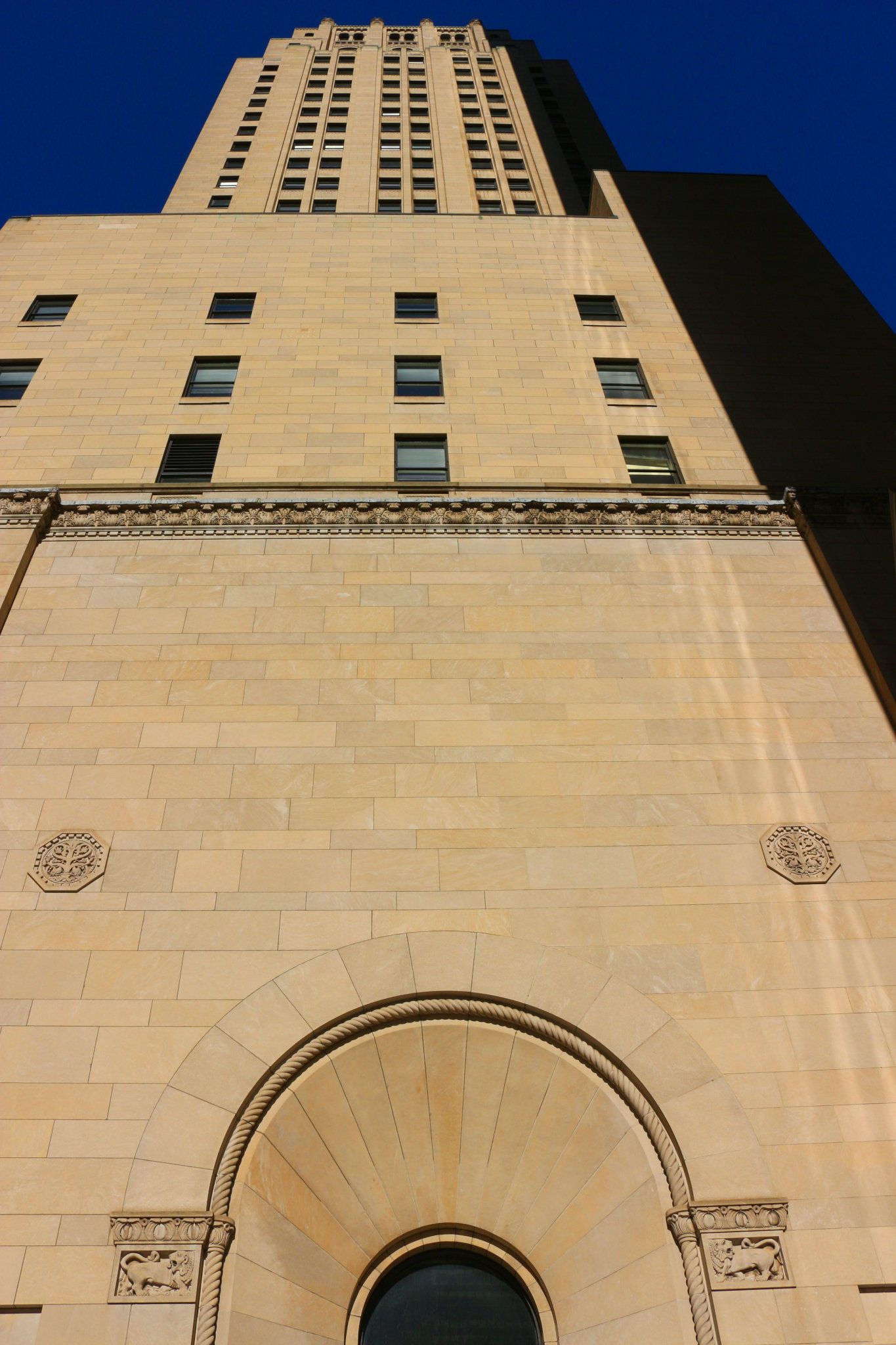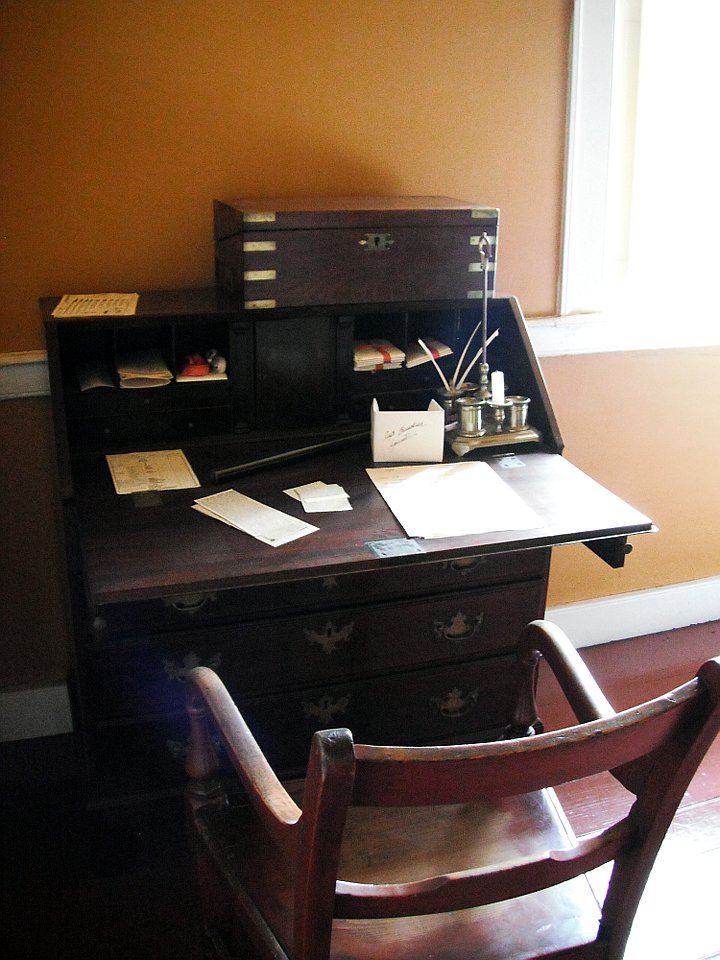Dragon at Croydon – For a story from youth, a picture by the youth at the time
I’m working on putting together two books at once right now, and this feels like a very cheering and natural publisher growth process. I have already settled on a clean comfortable and eye-friendly standard trade format, but it’s very interesting to think about the meanings and effects of design choices comparatively. Along with these two new volumes, I’m also creating a more perfected version of a previous book with a few extra biographical notes and many helpfully spotted corrections (thank you again, Andrea). Got to make ’em spiffy!
Of course marketing is the place where so many of my creative and productive friends are flailing right now – access to markets has never seemed so tantalizingly open, or been more tightly gate-kept and monopolized. But even if marketing wins the award for fastest moving target of the twenty first century, production has been no less completely transformed over the last couple of decades.
Comfortingly – one big thing has not changed at all – though this was a lesson I first learned as a technician, rather than at the drawing board. You cannot effectively commission work that you do not understand. Might sound a bit too simple to be solid and reliable, but I swear it is a real condition and limit in life. This is the reason that so many people treat repair technicians as if they must be crooked – not because most techs are (most really are not) but because the clients are too ignorant about the subject to be able to tell. Their rudeness is actually a function of their own fear and inability, rather than any sort of serious observation of the person they wish to hire (who, like everyone else, does their best work when treated with most respect).
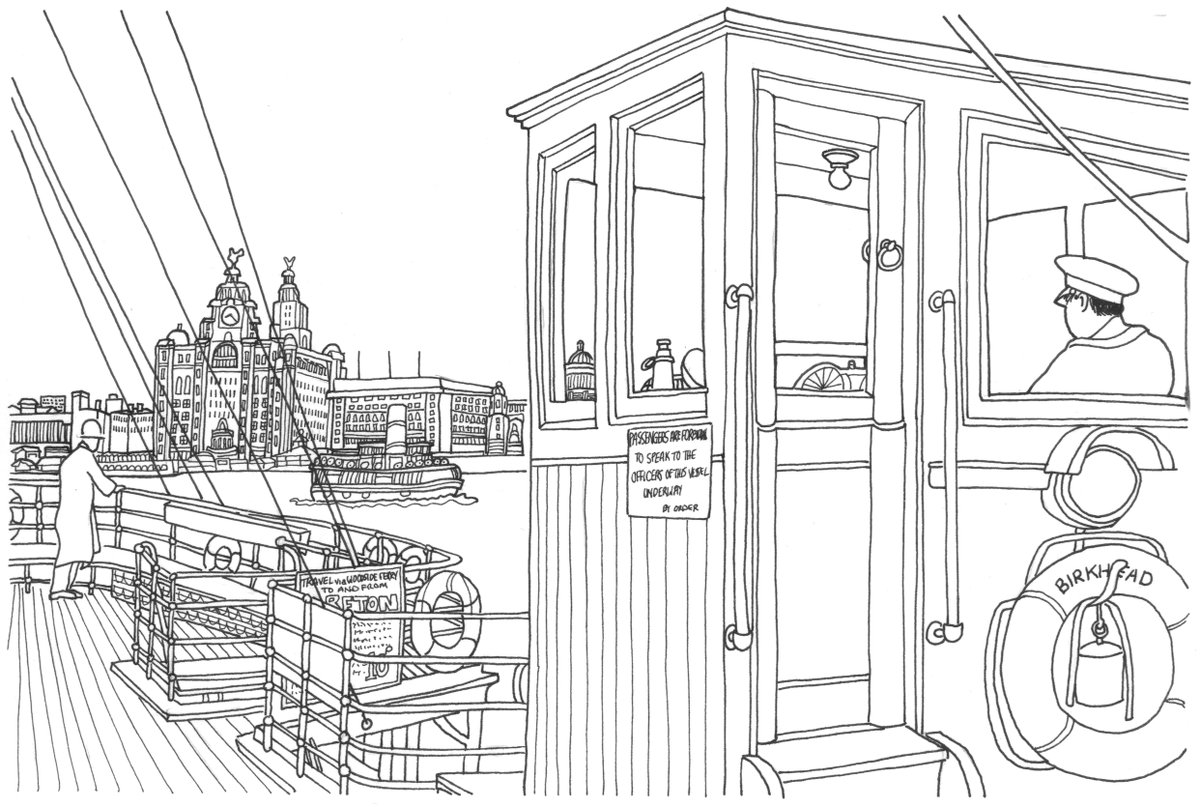
Mersey Ferry – ‘Lucky Pencil’ dividends
You can even tell the difference from the other side of the counter – someone who understands the work involved is always friendlier, because they come in understanding the limits, and the crucial importance of planning clarity. Programming is the most hilarious example, though this principle also applies in every other productive field I’ve investigated. If you change the goal of the project, halfway through the final execution of the work, the total effort required expands not in small steps, but by multiples. This is because any professional knows how to plan their work flow to achieve efficiency – but a mid-point course change disrupts that planning and all of the efficiencies they were already applying to the work.
In the case of a computer program, trying to add one more function when it is almost finished, has been known to very often double the size of the program, even if there were forty more complicated functions already implemented. Every late addition becomes, in a way, a clumsy workaround – a cheat.
Anyhow – I dug up my lucky (mechanical) pencil – the same instrument I used for the under-pencils from my Rapidograph line-drawing phase, and managed to do some concept sketches which reflected my crude but working understanding of the artist’s work and process. It was a good feeling to put enabling his artistic process foremost – and I hope that I can extend the same sort of sympathy and respect for both work and medium to other writers, painters, illustrators and photographers, as I steadily expand the artistic side of the Large Ess Small Press catalog over the next few years.
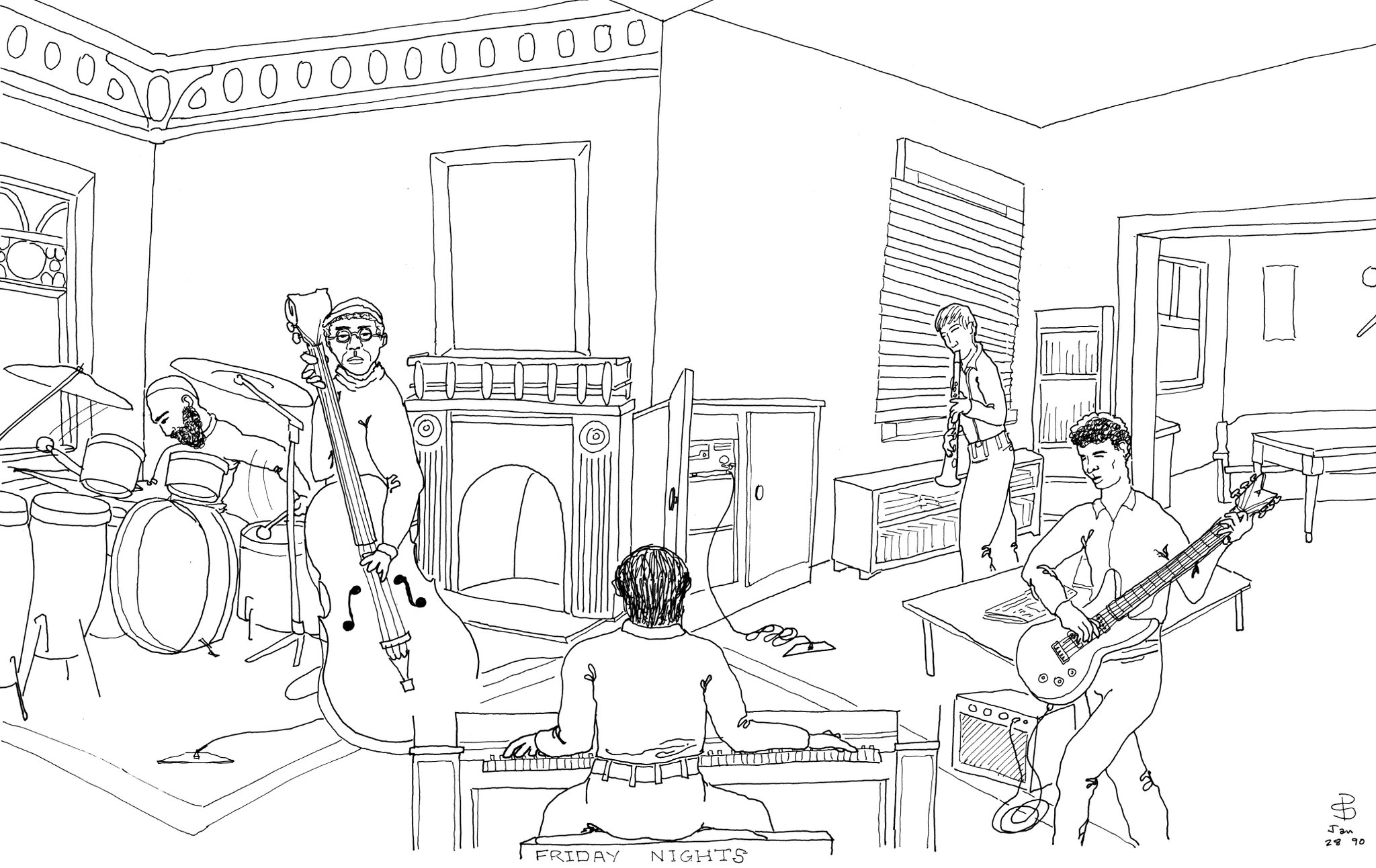
Friday Night Gang
The design process itself has got me thinking of the old zine days in the 80s and 90s when I made little self-published magazines for my friends – plenty of blue-pencil Xacto-cuts and spilled ink. Along the way I also learned that something familiar to the point of coziness is now so dramatically obsolete as to feel almost like a gut-punch.
In the old (that is, vital and thriving) days of news – when every city of any size had several competing local papers, “the morgue” was a precious and guarded resource that each paper or magazine would cultivate and expand over time. A vast library of useful images, diagrams and reference that might be needed for a later story. This is where they would go looking for a head-shot photo for a famous person’s obituary, but it’s also where they’d go for a map of Guam, or an old soda advertisement.
In a way, it was a physical manifestation of the long term memory of the news institution – and also a key means by which they could remind their readers how well they had known their city for how long.
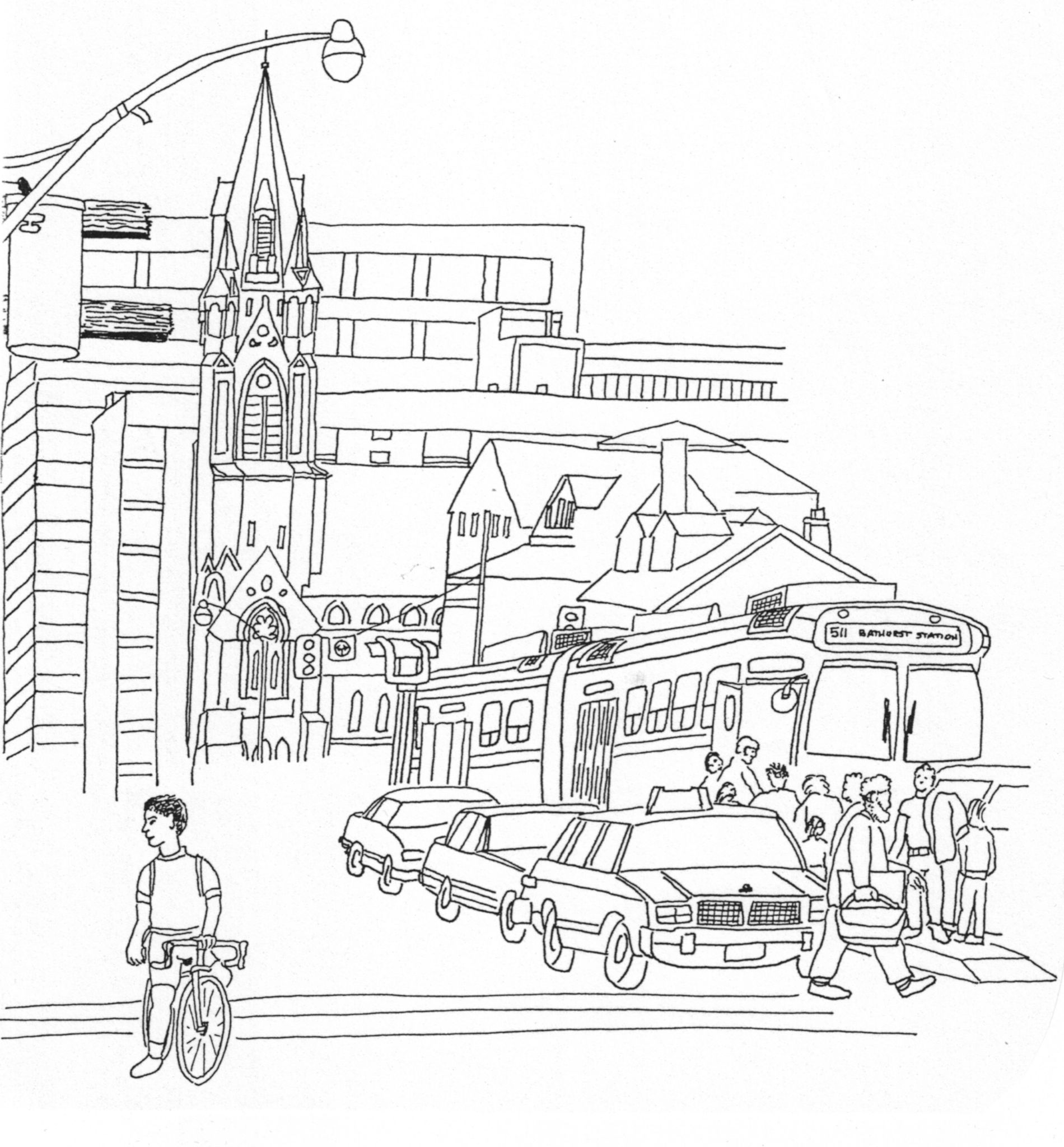
King Sol’s to the left, San Francesco’s to the right
There is another big change since the eighties cut and paste, paste-up days. Back then I was part of a hilariously educational (cautionary) comic book collective. We decided the best way to “Get The Word Out” was to make a political comic set in Toronto. It was as the official “background man” for this project that I first took up (SLR Analog Film) photography, in order to make reference photos of the real city, for us to set our grand arc of interwoven stories against.
Often I was after a perspective ‘shot’ which had a point of view which I couldn’t safely reach – no building in the right place to give me a high-angle, for example. So I’d have to redo the angles I’d recorded completely, then use the photo-reference to apply surface patterns to my sketchy new volumes.
I feel incredibly lucky to have recruited the super-talented (and proportionately busy and popular) artist Andrew Foerster, who wields an insanely warm and charismatic line, to work on my new book for youngsters – and since it is set in Toronto, I actually got out a dusty big box from the closet, full of my old analog photographic prints, and prepared to sort through thousands of them one by one, looking for the structures and areas in which my key scenes were set.
Then I realized I was being an idiot – nowadays I can call up Google-Earth/Maps/Street View and not only did I find all of my street and even alley-way shots – with a bit of extra fiddling, I even managed to set up a sweet free helicopter shot over the harbour! Yes, G-earth really did originally come from a military targeting system – but it sure has become a freakily amazing (and stochastically invasive) model of the physical world around us. Unsettling, but an undeniably useful resource.
As for key prop reference, thanks to the astounding commercialization of internet, that is now approximately everywhere – and usually shot from all useful angles also, because no matter what you can name, if it is a real (or even very popular fictional) human structure or artefact, someone out there on the web is eager to sell you one (or a very nice model of one, in the case of your more unwieldily props like battleships, cathedrals and ancient fortifications).
All of which means that my filing cabinet full of ultra-great reference images is now outdated not only in form and in time (a superb set of nineties political priorities) but also in function. Makes me wish I still had a fireplace. Proper bonfire of the vanities stuff, that (and it really would be awfully fun to photograph some of the more notable stinkers, burning).
The morgue is dead! Almost feels like a twenty first century variation on that age old imponderable – how do you throw away a garbage can?
Long live art and fun art tools – and trying our damndest to create and share fine new things that help to make the lives of others just a little more interesting, funny and beautiful!
¯\_(ツ)_/¯
Andrew (Rewfoe) Foerster’s own excellent superabundant and inspiring website can be found here.
And I wrote a piece about his fantastic drawing and animation – you owe yourself a taste of this rich trove of sweetness and clarity.

